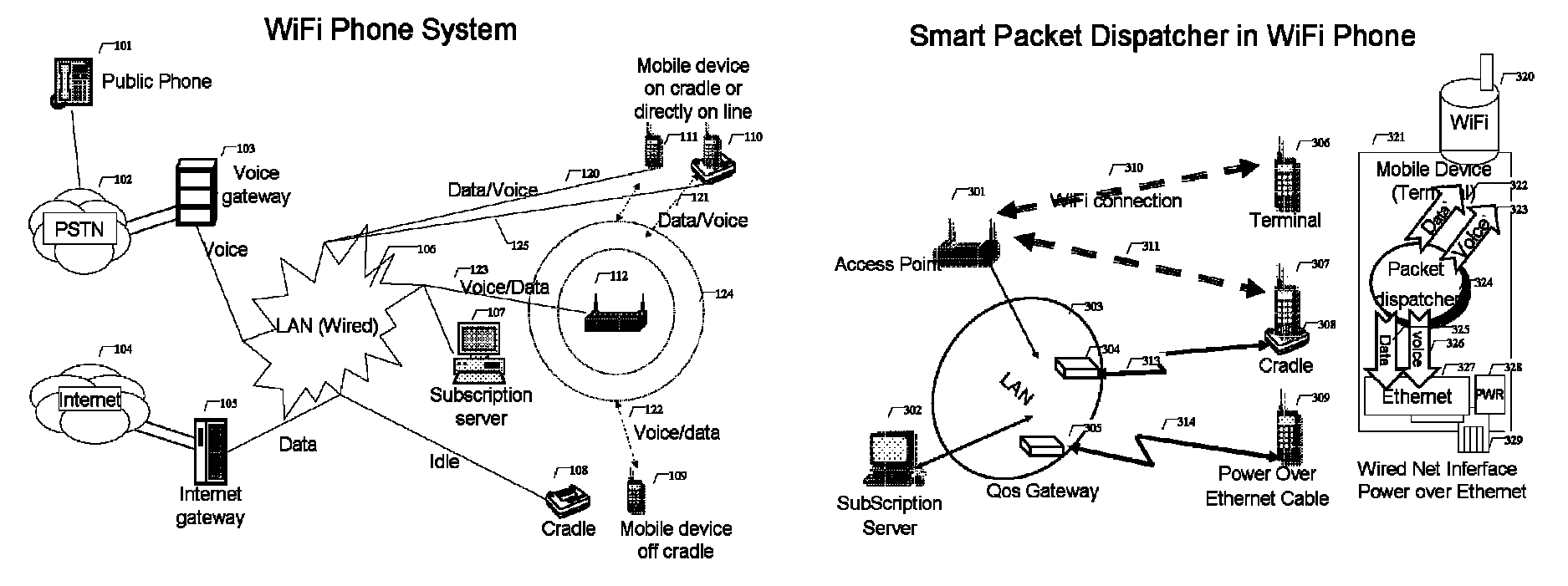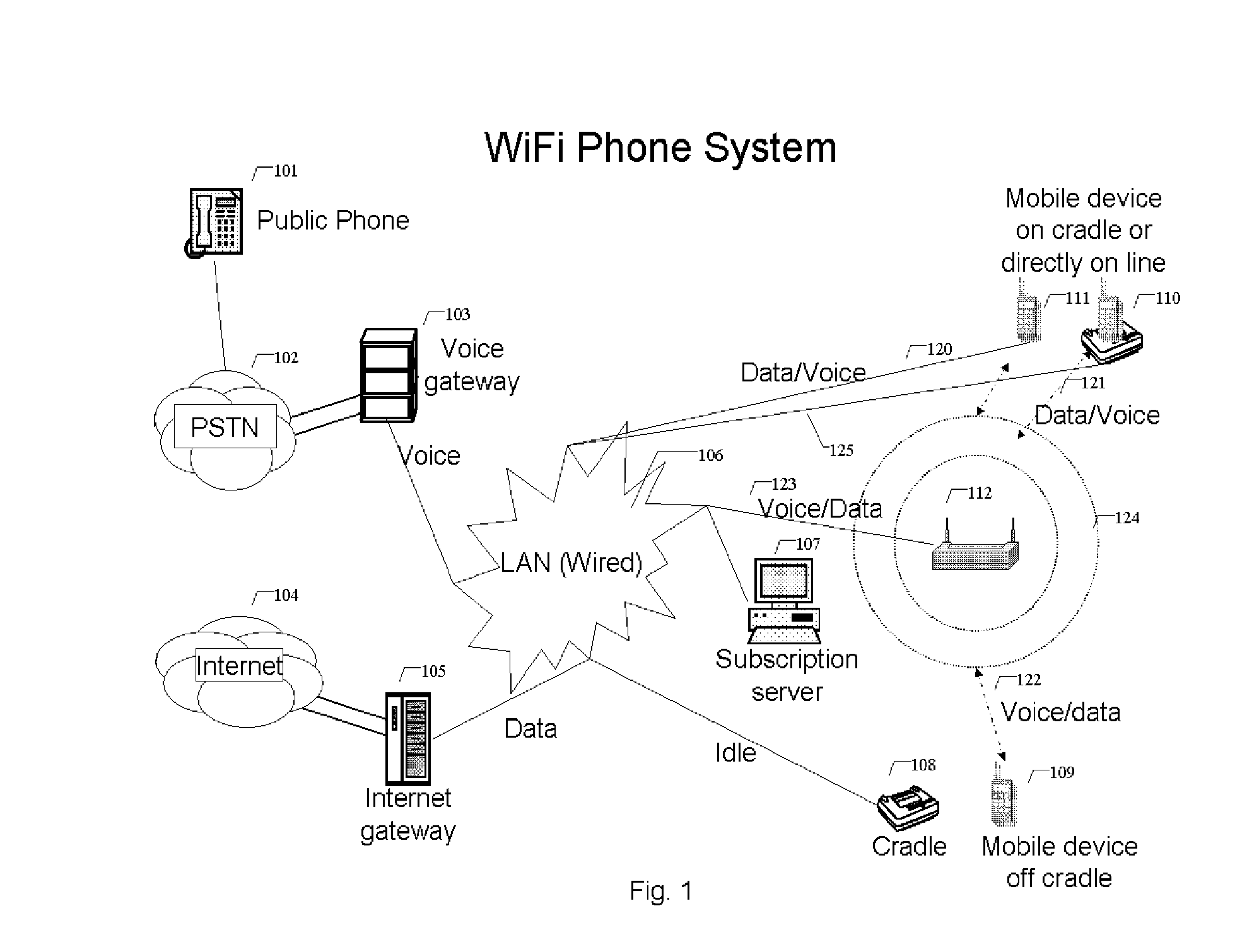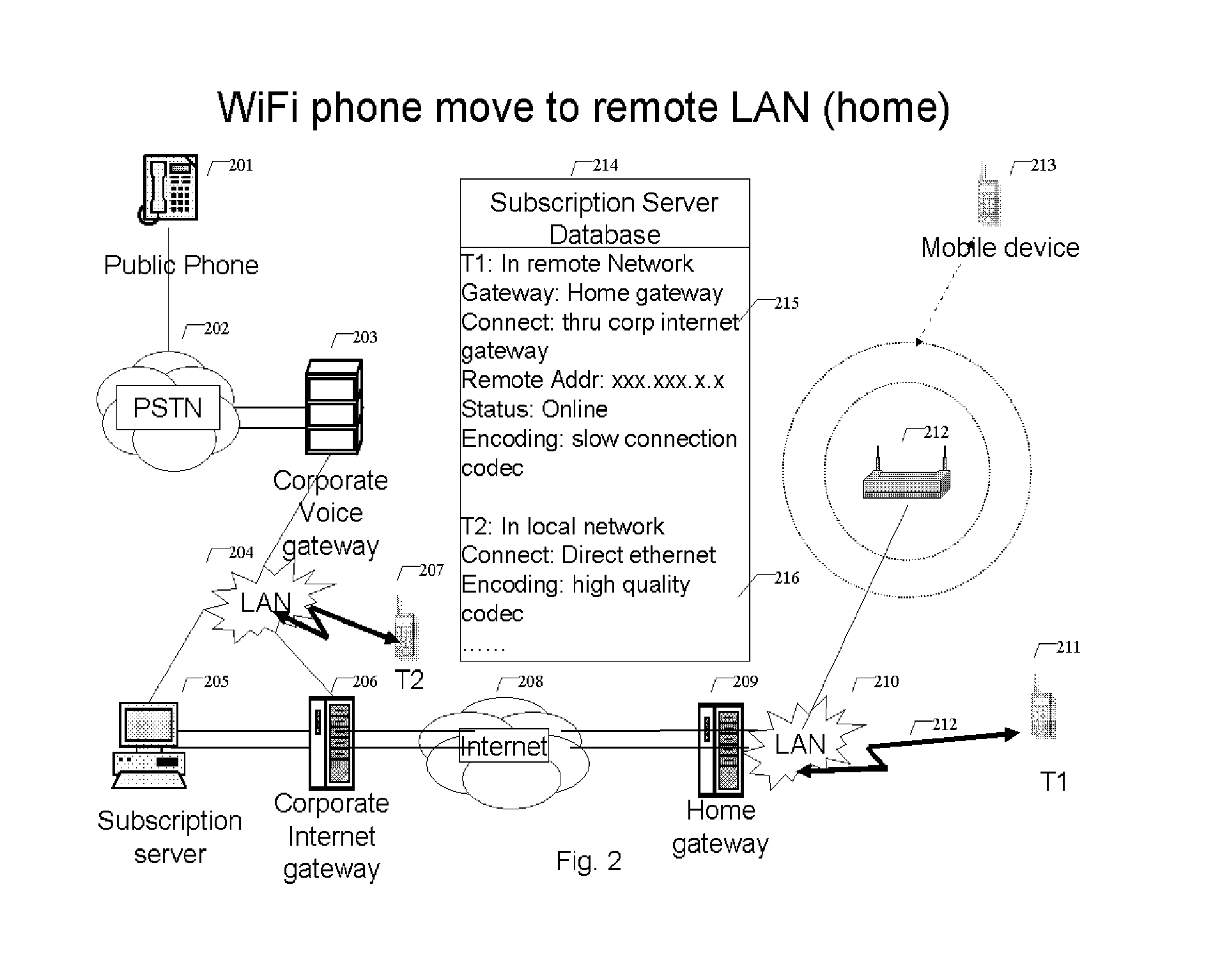WiFi phone system
a phone system and wireless technology, applied in the field of wireless or mobile communication, can solve the problems of not being able or very expensive to handle data communications at all, cellular networks only support very slow data connections, analog or rf wireless cannot directly support data over wireless, etc., to reduce bandwidth usage, reduce random waiting time, and speed up the transmission of high priority packets
- Summary
- Abstract
- Description
- Claims
- Application Information
AI Technical Summary
Benefits of technology
Problems solved by technology
Method used
Image
Examples
Embodiment Construction
[0107]FIG. 1 shows the overview of the WiFi phone system. In FIG. 1, (106) is the wired local area network (LAN) in a typical corporation or home. In this system, a regular network gateway for data access, typically an Internet gateway (105) is directly connected to both the wired LAN (106) and Internet (104) through which LAN users can connect to and browse the Internet. The local network (106) is extended to WiFi wireless domain by wireless gateways or access points (112). It also connects to the public telephone network by the voice gateway (103). This local area network is packet switched data network.
[0108]The most commonly used wired LAN (Local Area Network), including most companies or home networks are Ethernet which uses bus or star topology with CDMA / CA (Carrier Detection Media Access / Collision Avoidance) for media access. However, any other digital network can be used such as ATM or fiber network as long as they can transmit data packets using standard protocols such as T...
PUM
 Login to View More
Login to View More Abstract
Description
Claims
Application Information
 Login to View More
Login to View More - R&D
- Intellectual Property
- Life Sciences
- Materials
- Tech Scout
- Unparalleled Data Quality
- Higher Quality Content
- 60% Fewer Hallucinations
Browse by: Latest US Patents, China's latest patents, Technical Efficacy Thesaurus, Application Domain, Technology Topic, Popular Technical Reports.
© 2025 PatSnap. All rights reserved.Legal|Privacy policy|Modern Slavery Act Transparency Statement|Sitemap|About US| Contact US: help@patsnap.com



